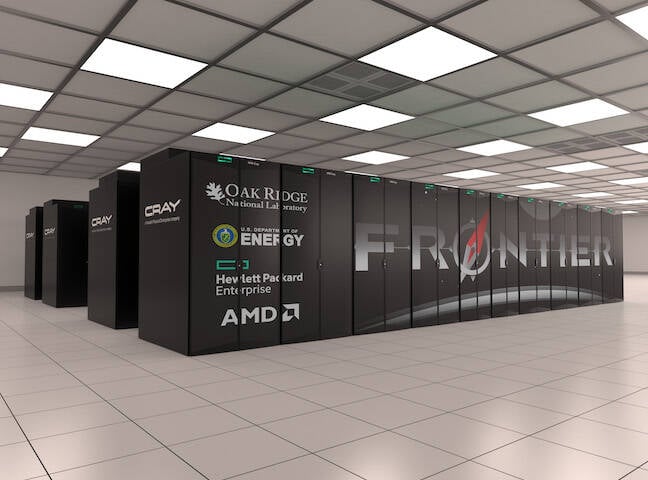DoE supercomputing centers get $1.5B boost from Biden administration


The Biden administration has carved off a supercomputer’s worth of cash from the Inflation Reduction Act to upgrade the US Department of Energy’s (DoE) national laboratories.
Despite the confusing name, a major focus of the the Inflation Reduction Act was to fund domestic energy production and manufacturing technologies, with a goal of reducing carbon emissions by 40 percent before the decade is out.
According to the DoE, the $1.5 billion infusion makes up for “decades of underfunding,” which the department says has hamstrung research at America’s national labs in energy and nuclear tech, in addition to eroding the nation’s technological edge over rival nations like China and Russia.
The funding will support the development of “advanced energy technologies and groundbreaking tools like Argonne National Laboratory’s powerful new supercomputer, Aurora, that we need to advance new frontiers, like modeling climate change and developing vaccines,” US Secretary of Energy Jennifer Granholm said in a statement.
However, when it comes to national supercomputing capability, the US has already fallen behind. China has at least two exascale-class supercomputers that we know of. By comparison, Oak Ridge National Laboratory’s Frontier supercomputer remains the United States’ first and only exascale system — at least until the long delayed Aurora comes online. And due to continued delays to the Intel chips used to power the system, it doesn’t appear that will be any time soon.
The DoE has long relied on supercomputers to simulate large, complex experiments that are often impractical, or in the case of nuclear weapons testing, outright illegal under international law. For instance, Sandia National Labs recently explored the use of Cerebras’ wafer-sized accelerators to accelerate simulations on the nation’s nuclear weapons stockpile.
However, many of the projects funded by the Inflation Reduction Act have a far less destructive bent to them, with the majority related to nuclear, fusion, and other sources of power generation. Fusion energy is a major area of investigation for the DoE, which has earmarked $713 million to develop a workable fusion power plant by 2030.
Unfortunately, supercomputers capable of more than an exaflop of FP64 performance aren’t exactly cheap — Frontier is expected to cost roughly $1.8 billion over the course of its lifespan. Instead, the DoE plans to spread the funding across 14 of its 17 national laboratories to support a variety of climate, physics, nanotech, nuclear research. Additionally, some of the funding will go towards deferred maintenance on the facilities, including fire alarms, electrical and HVAC systems.
With that said, several of the largest disbursements will go toward expanding the nation’s supercomputing capacity. ORNL will receive nearly a third of the funding — $490 million — to advance its work in exascale computing. Meanwhile, Lawrence Berkeley National Laboratory and Argonne National Labs will receive $196.6 million and $57.5 million, respectively to, among other things, expand their supercomputing resources. You can find a full breakdown of funding here [PDF]. ®



